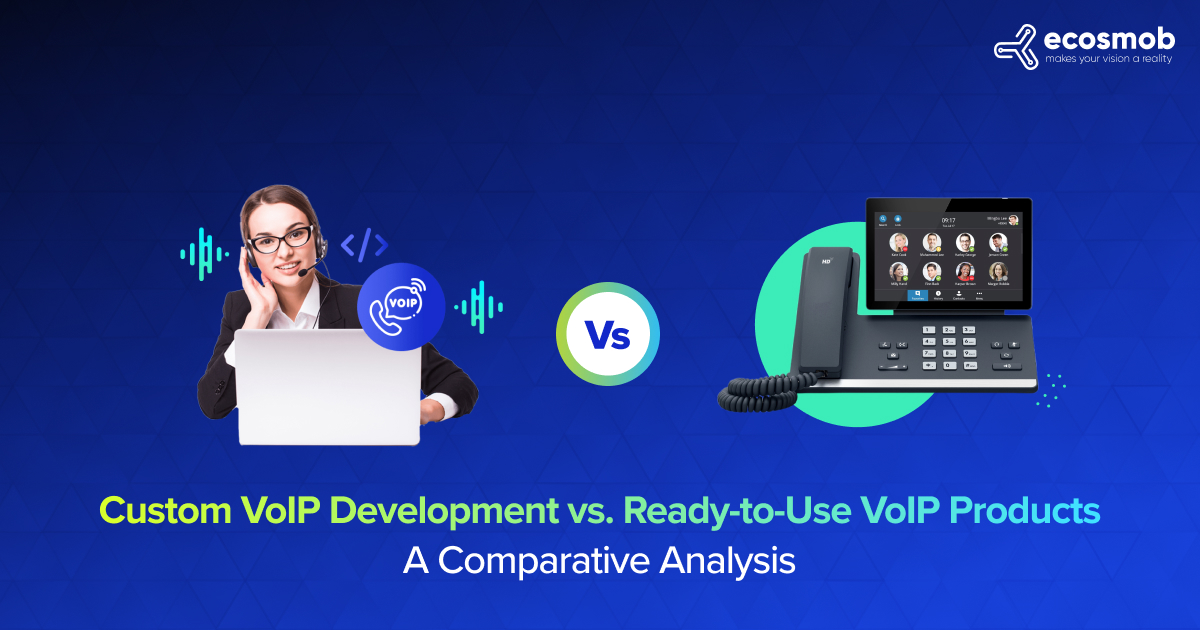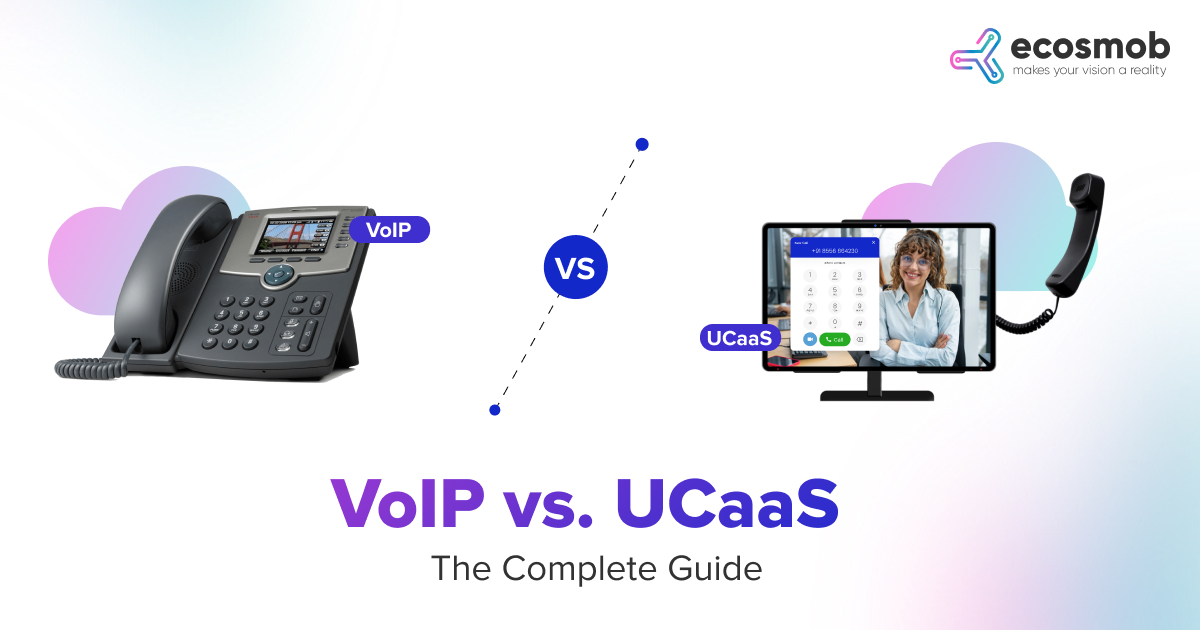In the digitization age, businesses worldwide seek ways to adapt to rapid technological changes and streamline operations and innovations. Central to this paradigm shift is digital transformation—a process where companies integrate digital technologies into various business areas to drive efficiency and improve the customer experience. One of the cornerstones of this transformation is the integration of Unified Communications (UC) solutions. Let’s dive deep into how Unified Communication powers digital transformation.
What Is Unified Communications?
Unified Communications amalgamate multiple communication methods that businesses use daily. Think instant messaging, voice calls, video conferencing, screen sharing, and file transfer. Instead of juggling separate tools for each of these functionalities, businesses can leverage UC solutions to combine them into a cohesive, integrated interface. This means fewer disruptions, less hassle, and a more streamlined communication flow.
According to a study by Statista, the global unified communications and collaboration market size will reach USD 48.3 billion by 2023. During the pandemic, the market clocked a growth of 29% in 2020 to hit 47.2 billion, according to Statista. Primarily, the rise has been fuelled
by the increased demand for hybrid tools for business continuity. Going by the current trends, digitization is sweeping swathes of traditional and non-traditional industries. Respondents are 3 times more likely than before the pandemic to state that 80% of their customer interactions are digital; another report by McKinsey underlines the facts from its recent survey.
Unified Communications and Digital Transformation: A Symbiotic Relationship
Unified Communications and Digital Transformation are two significant movements in technology and business processes. They’ve increasingly become intertwined as organizations seek to modernize, streamline, and improve their operations. Their symbiotic relationship can be dissected as follows:
- Improved Collaboration: Modern businesses are often dispersed across different geographical locations. Teams need robust tools to collaborate effectively. UC solutions provide an avenue where teams, regardless of their background, can easily collaborate, breaking down silos and boosting productivity.
- Scalability: As businesses grow, so do their communication needs. UC solutions offer a scalability feature that traditional communication tools lack. With a UC platform, companies can quickly add new user features or integrate with other enterprise applications, making it easier to adapt to change.
- Cost-Efficiency: By merging various communication tools into one, businesses can significantly reduce costs. There is no need for separate subscriptions or integrations. This unified approach lowers direct costs, reduces downtime, and boosts overall operational efficiency.
- Enhanced Customer Experience: In the customer-centric era, organizations constantly seek ways to improve the customer journey. Unified Communication Solutions provides tools like instant messaging and video conferencing that allow businesses to interact with their customers in real time, offering quick solutions and fostering relationships.
- Data Analytics and Insights: Modern UC platforms have analytics tools that provide insights into communication patterns, call durations, response times, etc. These insights can guide businesses in making informed decisions and optimizing operations.
Unified Communications and Digital Transformation share a symbiotic relationship, each propelling the other forward. At the same time, DT reimagines and reshapes the business, and UC ensures that the communication channels facilitating this transformation are efficient, effective, and future-proof.
Adapting to a Mobile-First World
With the rise of smartphones and mobile devices, the workplace is no longer confined to a physical office. Employees want the flexibility to work from anywhere, and UC is at the forefront of this change. Unified Communication Solutions have evolved to be mobile-responsive, allowing users to seamlessly access all communication tools from their mobile devices. This flexibility improves productivity and allows businesses to be more agile and responsive.
Security and Compliance in Unified Communications
One of the critical concerns for any business, especially when integrating new technologies, is security. With cyber threats looming large, ensuring that internal or external communication is secure is paramount. Modern UC solutions are built with advanced security protocols, ensuring end-to-end encryption and adherence to global compliance standards. This ensures that while businesses streamline their communication, they’re not compromising on security.
Successful Digital Transformation Initiative
For any digital transformation initiative, the most crucial aspects are managing change—in technologies, teams, processes, workflow, and culture. Unified Communications aims to optimize the experience by sustained communication and collaboration between business, technology, human resources, and change management leaders. As digitization permeates deeper, it will drive broader demand for unified communication solutions providers, unified communication services such as UCaaS, and Unified Communication solution development.
Digital Workers
Using UC, organizations can deploy and bring all the stakeholders under one platform. The platform acts as a unifying force to help each unit work in coherence to communicate seamlessly with IP phones, instant messaging, email, voice, and video conferences without any restriction of location or time. This enables the digital workflow to be set up and executed.
You can unify communications under one umbrella to meet the needs of a changing workforce. By 2025, millennials are expected to comprise 75% of the global workforce. Collaboration, workplace technologies, and flexibility are going to be the buzzwords. We are already noticing the trend picking up with the push from the Covid-19 pandemic. The nature of the workforce and workplace culture are likely to undergo a tectonic shift.
Ingrain Agility and Flexibility
It is instead a difficult task to keep pace with the rapid changes. When COVID-19 hit, businesses accelerated changes worth years, acting 20-25 times faster. Companies deployed workable solutions for remote work 40 times more quickly than they thought was possible. For instance, establishing remote working took 11 days to implement.
Using UC, you can deliver a prompt response to changes. It allows communication across the organization to be optimized by factoring in agility. As new demands emerge, organizations can quickly move to restructure and test new processes proactively. Massive spending on travel, phone bills, and IT management, among others, can also be avoided with periodic and regular communication between teams, leaders, and management. An organization has little influence over the digital competition in the industry. However, it can ensure greater adoption of the digital transformation approach to weather uncertainties.
Enhance Organizational Collaboration
Digital transformations are more effective when companies give people clear roles and responsibilities. A leader who acts as the “owner” in charge of a particular initiative to restructure a process will likely drive his team towards the shared goal.
Streamlining the work process using UC to form an efficient workflow enhances organizational collaboration. Employees in continuous touch with their superiors on a real-time basis feel empowered and motivated. Communication mediums such as file sharing, screen sharing, and video and audio conferencing act as a glue to hold together a hybrid team and foster clear communication.
The complexity of IT and business processes is bound to grow. Even moving to the cloud means increasing complexity by adding one more layer. In a multi-vendor environment, troubleshooting becomes more challenging if communication lag occurs. You can cut the slack with UC by offering employees and customers a consistent experience in all channels.
Be Future Ready
Digital transformation is demanding on the legacy infrastructure. It would be best to have agile and network readiness to allow high traffic from the new productivity and collaboration tools. UC solution providers create backbone infrastructure for access to holistic solutions that seamlessly allow for monitoring, management, and optimization of both application and network environments.
Unified communication for small businesses or significant aims to build a bridge between all stakeholders. A poor network or communication will come in your way of digitization. In the future, the awareness of the benefits of unified communications will help accelerate the adoption of even low-end UC service bundles by small and medium-sized businesses.
Engaging Customers
Making customers happy and driving meaningful conversations every time is one of organizations’ goals to thrive in today’s hyper-competitive world. Unified communication solutions empower you with omnichannel customer service platforms. From the moment a customer reaches out to you to pull out historical information and provide him the correct information, starting from right where he left off, is possible with an omnichannel interface.
Choosing the right Unified Communications Solutions provider to fuel Digital Transformation
Unified communication solution development was primarily restricted to VoIP (Voice over Internet Protocol). However, the booming market has seen many players offering similar yet different services. Like personal gadgets, workplace technologies are heavily influenced by consumer goods now. Virtual meeting rooms and video conferencing are part of the new-age unified communication solution. By opening up to cloud-based unified communications systems, organizations can allow 24/7 access and support to global and distributed teams. However, It is important to step forward with the right partner. Unified Communications
Ecosmob Technologies offers expert counsel with 14 years of experience in the industry across all verticals and sizes and businesses to take the proper steps. We have helped hundreds of organizations overcome hurdles to succeed with digital transformation using UC solutions.
FAQs
How does Unified Communication power Digital Transformation?
Unified Communication supports digital transformation by facilitating seamless communication, increasing operational efficiency, improving customer experience, and enabling businesses to adapt quickly to changing needs.
Why is Unified Communication essential for modern businesses?
Unified Communication provides flexibility and agility, allowing employees to communicate and collaborate in real-time from any location, making businesses more responsive and competitive in the digital era.
What are the components of a Unified Communication system?
Common components include IP telephony, video conferencing, instant messaging, presence information, unified messaging (integrated voicemail, email, SMS), mobility features, and collaboration tools.
How does Unified Communication improve customer service?
With Unified Communication, businesses can offer multi-channel support, ensuring timely responses to customer inquiries, improving resolution times, and offering a more personalized experience.
Can Unified Communication Systems integrate with other enterprise solutions?
Yes, many Unified Communication solutions are designed to integrate with CRM, ERP, and other enterprise software, ensuring data synchronization and streamlined workflows.
Is it expensive to implement a Unified Communication solution?
Costs can vary depending on the scale and features required. However, the return on investment in terms of productivity, collaboration, and customer satisfaction can justify the initial expenditure.
















